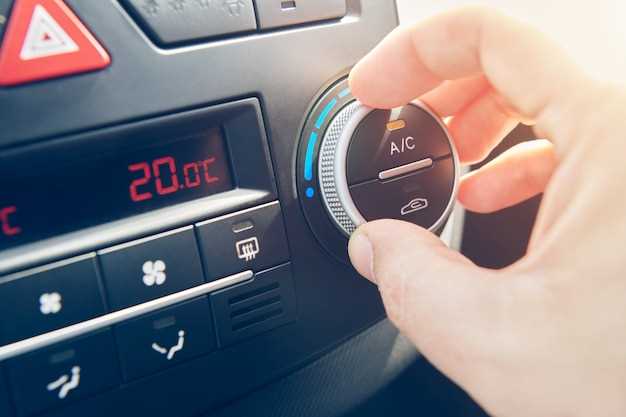
How to Diagnose Overheating Issues

Overheating is a common issue that can significantly impact the performance and longevity of electronic devices. Understanding the root causes of overheating is crucial for effective troubleshooting and ensuring optimal functioning of your gadgets. This article aims to provide a comprehensive guide on how to diagnose overheating problems in various devices, from personal computers to smartphones and other electronics.
When a device overheats, it may exhibit various symptoms, including reduced performance, unexpected shutdowns, or even hardware damage. Identifying these signs early on can prevent more serious issues and costly repairs. By focusing on effective troubleshooting methods, users can pinpoint the reasons behind the overheating and implement appropriate solutions.
This guide will explore common causes of overheating, such as dust buildup, inadequate ventilation, and software issues. Furthermore, we will discuss essential tools and techniques that can assist in diagnosing these problems effectively. Whether you are a tech enthusiast or a casual user, understanding how to address overheating issues will empower you to maintain your devices in prime condition.
Identifying Common Signs of Device Overheating

Recognizing the signs of device overheating is crucial for effective troubleshooting and preventing potential damage. One of the most noticeable indicators is an increase in temperature. If the device feels unusually hot to the touch, it may be overheating. This sensation can often occur around the processor, graphics card, or power supply areas.
Another common sign is unexpected shutdowns or restarts. Devices may shut down automatically to protect their internal components when temperatures exceed safe operational levels. Frequent, unplanned shut-offs can lead to data loss and should prompt immediate action.
Performance issues are also indicative of overheating. Users may notice sluggishness, lag during operations, or decreased responsiveness. These symptoms may arise when the device throttles its performance to manage excess heat. Graphics and processing-intensive applications may exacerbate these challenges.
Noisy operation can signal overheating problems as well. The internal fans tend to work harder and faster to cool down the device when it overheats. If noise levels significantly increase, it may suggest that the cooling system is struggling to dissipate heat efficiently.
Unexpected error messages or system alerts can further highlight overheating issues. Many devices are equipped with thermal management systems that monitor temperatures and can trigger warnings or notifications when overheating is detected.
Additionally, users should be vigilant for any signs of physical damage. Discoloration, burnt smells, or warping around vents and ports are serious indicators that overheating has occurred and may have affected the device’s integrity.
Ultimately, being aware of these common signs can help users identify overheating issues early, allowing for timely troubleshooting and potentially avoiding extensive damage. Regular maintenance and monitoring are essential to keep devices running within safe temperature ranges.
Steps to Isolate the Cause of Overheating

When diagnosing overheating issues in devices, it’s essential to follow a systematic approach. Begin by observing the surroundings of the device. Ensure that it is placed in a well-ventilated area. Blocked air circulation can significantly contribute to overheating.
Next, examine the device’s internal components. Dust accumulation can obstruct cooling fans and heat sinks. Carefully open the device, if possible, and clean any dust or debris you find. Use compressed air for hard-to-reach places.
Check the status of the cooling system. Ensure that fans are operational and spinning freely. If a fan is noisy or not functioning, it may require replacement. Additionally, verify that thermal paste is applied appropriately between the CPU and its heat sink, as this can affect heat dissipation.
Evaluate the workload on the device. Overheating can occur if the device is under excessive load for prolonged periods. Monitor CPU and GPU usage to determine if there are any resource-heavy applications causing the issue.
Inspect the power supply. An inadequate or failing power supply can lead to overheating. Ensure that the power supply meets the device’s requirements, and check for any signs of damage or wear.
Lastly, consider environmental factors such as ambient temperature. High external temperatures can exacerbate overheating problems. Place the device in a cooler environment to see if the issue persists.
By following these steps, you can effectively isolate the cause of overheating and determine the necessary remedial actions to take.
Preventive Measures to Avoid Future Overheating Issues
Implementing effective preventive measures can significantly reduce the occurrence of overheating problems in devices. Regular maintenance is essential; dust accumulation can block ventilation systems, leading to increased temperatures. Schedule routine cleanings to ensure all vents and fans are free of debris.
Additionally, monitor the environmental conditions where devices are located. Make sure to keep devices in well-ventilated areas, away from direct sunlight and other heat sources. A temperature range that is too high can compromise a device’s performance, leading to potential overheating.
It is also crucial to employ appropriate cooling systems. If you notice that a device frequently runs hot, consider upgrading to more efficient cooling solutions, such as enhanced fans or thermal paste applications that improve heat dissipation.
Regularly update software and firmware, as developers often release updates that optimize performance and manage heat distribution more effectively. Keeping the operating system and applications current can help in troubleshooting overheating issues before they escalate.
Lastly, limit the number of applications running simultaneously to reduce processing load. High CPU usage can lead to heating problems, so close any unnecessary applications. By taking these proactive steps, it is possible to significantly mitigate overheating risks and enhance the longevity of your devices.


















